
Aeromomentum
Mark Kettering at Aeromomentum reports no changes in his engine lineup for 2021. In fact, the challenge going into the new year is holding the line on pricing. It’s the old story: Suppliers have been raising their prices, Aeromomentum has absorbed the increases, but eventually the final price must go up.
For 2021, the Aeromomentum engine lineup is unchanged, meaning a 1000cc three-cylinder, 1300 and 1500 four-cylinders and a turbocharged 2.0-liter four-cylinder. The other two engines on the Aeromomentum website—the naturally aspirated AM20 and AM24 four-bangers—are not available this year, even if they are listed. The AM20T turbo engine seems to fill this higher-powered end of the market, plus Kettering has been busy with other initiatives.
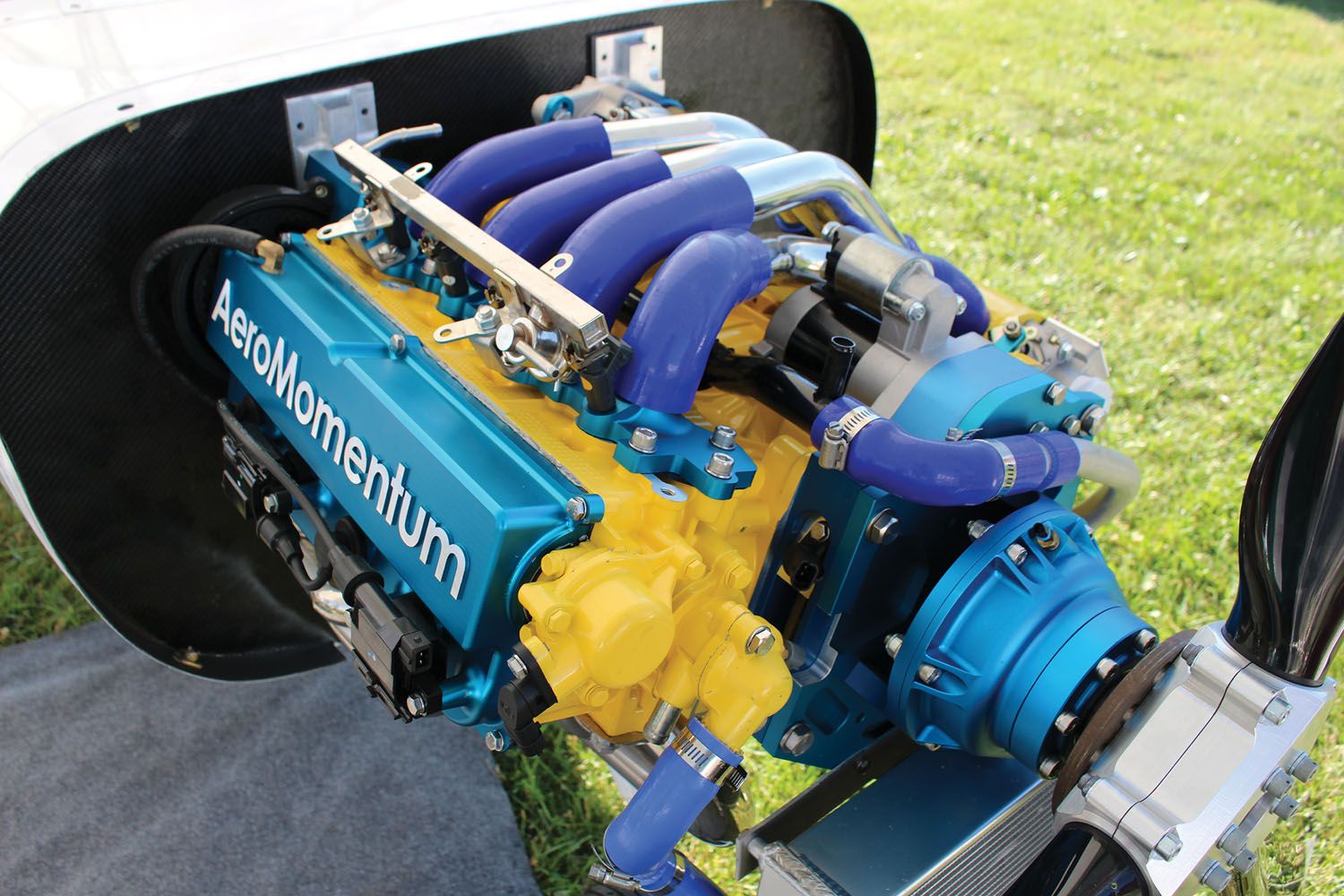
Aeromomentum engines begin with brand new automotive long blocks. Suzuki is the source of the 1300 and 1500 engines. The others are non-Suzuki and cannot be revealed as part of the sourcing agreement. All engines are built from all-new parts; no salvage or used engines are ever used. Power ranges from 75 to 260 hp. Kettering compares his engines to the O-200 and big-bore Continentals along with 235–540 Lycomings.
All Aeromomentum conversions use a helical, spur-gear prop reduction gearbox. It features custom 8620 alloy gears (not quick-change auto-racing gears). And like many of Aeromomentum’s other parts, it’s designed in-house—forged, machined, heat-treated and otherwise produced by out-of-house vendors, then assembled in-house at Aeromomentum. The highest time gearbox so far logged 5500 hours in an airboat with no issues. Aeromomentum also offers various firewall-forward supporting parts such as engine mounts and cowlings, plus their own AeroGraph engine monitor.
ADEPT Airmotive
Based in South Africa, ADEPT Airmotive has been working up a small group of engine combinations for several years now. Aiming for the higher performance end of the market, ADEPT is using a DOHC V-6 with a propeller gearbox and has announced 280N plus 320T and 360T versions. The 280-hp version is naturally aspirated while the 320- and 360-hp variants are turbocharged. ADEPT has displayed at AirVenture in conjunction with Evolution Aircraft, but the latest information has been difficult to come by from the company.
Auto PSRU’s
Auto PSRU’s offers complete automobile conversion engines. But really they are fully involved in everything firewall-forward for their customers as necessary, all the way to engine mount weldments. Their main attraction is a time-tested spur gear prop reduction unit with a centrifugal clutch. It’s available in several sizes, or as Stuart Davis of Auto PSRU’s puts it, “We handle from about 150 to 550 horsepower.” The company’s complete engine offerings center on the Chevy LS series, Subarus and Mazda 13B rotaries. All feature self-contained, pressurized oiling and the ability to accommodate constant-speed propellers. And with custom gear ratios and adapters, they’ll work with almost any engine.
For 2021, Auto PSRU’s phased out the BW350 gearbox for the updated SD400 (the numerals indicate the unit’s horsepower capacity). The SD400 accommodates the common 11-inch Chevrolet flywheel and matching aftermarket starter motors.
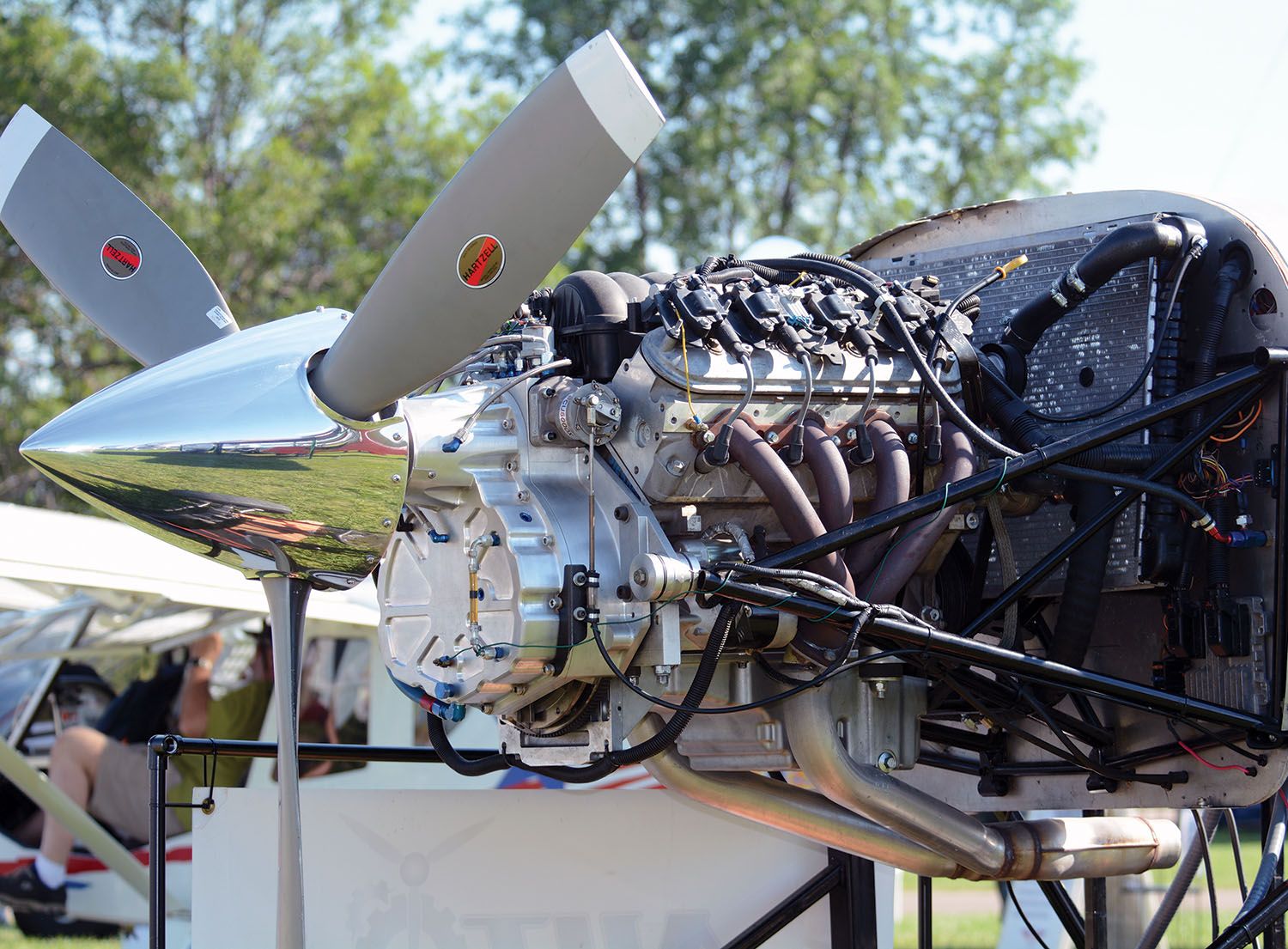
The aerobatic-qualified gearbox announced last year, the SD550, is now in production. It is the SD400 box beefed up with an external brace, much stronger prop shaft, larger bearings and different splines on the top gear drive, all to better withstand gyroscopic loads. The main market for it is the replica P-51 crowd.
In the smaller PSRUs, fitting the improved oil pump and other upgrades first put in the SD400 has turned the 200Z into the 250Z. In turn, adding a 7-inch offset drive to the 250Z gives the 300Z, which handles V-6, small V-8 power and even vertical engine installations for helicopters. These smaller PSRUs are also good for inline four- and six-cylinder engines for narrow-nosed aircraft, WW-I replicas and so on. They allow a slow, 1800-rpm prop speed, perfect for large wood props, and weigh 70 pounds less than the SD400. Interestingly, the 250Z and 300Z are both rated for 300 hp.
Auto PSRU’s continues to caution against hot-rodding Chevy V-8s—an evermore popular customer desire—as the engines are well-engineered in stock form, lose reliability when modified, and most airframes can’t use more power anyway. Finally, Auto PSRU’s has increased prices—see the table below—for the first time in eight years, mainly due to the increase in base engine prices.
Firewall Forward Aero Engines
First off, don’t confuse Firewall Forward Aero Engines with The New Firewall Forward Engines. They are separate outfits. The first is the Canadian engine maker we’re covering here; the latter is a rebuild shop in Loveland, Colorado.
While Firewall Forward Aero Engines continues its two small Honda-based four-cylinder offerings, the CAM 100 and the CAM 125, the emphasis for 2021 has been beefing the muscular CAMdrive 500 PSRU for 600 to 700 hp Chevy V-8s. Firewall Forward’s Archie Dobbins says big power Chevy LS V-8s are all the rage, and the CAMdrive 500 has been getting attention because of it. The case material has been upgraded to 7075 aluminum, and the bearings have been improved along with enhancements to the internal oiling system. Extra springs have gone into the torque coupler, and multiple take-off points are now available for oil pressure monitoring. Unchanged is the prop flange, which is easily removed without opening the gearbox. And the integrated front mount pads remain along with two power takeoffs, one for the prop governor and the second for a standby alternator or vacuum pump.
The next CAMdrive 500 production run of 12 units will feature an enlarged slot for a larger flywheel and reaming of all connection points to 10mm for the new metric GM blocks. A billet bell housing is also planned for the all-out crowd (bring extra cash). Complete PSRU kits include a custom cast bell housing, coupler and spacer ring, the CAMdrive 500 PSRU and choice of prop flange; these all feature the popular 9-inch crank-to-prop offset.
Robinson V8 Power
Nothing needs more power than a seaplane, and Robinson got their start converting Chevy LS engines for repowering Seabee amphibians, a market they’re quite popular in. The business has progressed to providing packages suitable to give LS fans a head start in powering all sorts of Experimentals with conversion kits covering the sparsely populated 300- to 425-hp range.
Base Robinson kits start with a new Chevy long block, either naturally aspirated or supercharged by GM. Highlights of the base package are exhaust manifolds, alternator, starter, flywheel, ignition harness, an engine control module (computer), engine wiring harness, throttle body and a propeller gearbox. The latter is available in three lengths, two gear ratios and uses a Morse chain drive allowing variable-pitch, constant-speed or reversing propellers, the last being popular with seaplane pilots. The base kit is delivered assembled as far as practical.
Robinson uses the stock General Motors computer but removes the unneeded code regarding oxygen sensors (which are not installed) and emissions. Mogas (91 octane) or 100LL is allowed. Robinson reports a 12 gph fuel burn with the 425-hp LS3 engine at cruise power settings of 23 inches and 3300 rpm.
Optional accessories are a custom engine mount, the remainder of the exhaust system and an entire cooling system based around the Chevy Corvette radiator. Robinson asks for 30% down when ordering, another 30% a month later, another 30% in the second month and the final 10% prior to shipment. There is no refundable deposit.
Air conditioning is a surprise-and-delight feature of the Robinson conversions, which retain their automotive air conditioning hardware. Cockpit heat is also fast-acting. For 2021, Robinson says it’s working on a new kind of drive but found our deadline too early to go public with it. So, it sounds like if you’re in the LS market, it’s worth a phone call to get the latest developments.
Viking Aircraft Engines
Wanting to take advantage of the incredible advances in modern automotive engines, Viking specializes in late-model Japanese auto conversions. Its three-engine lineup is based on current production, multivalve, computer-controlled engines from Honda and Mitsubishi that were built on state-of-the-art modern production lines. Furthermore, backed by automotive production levels, Viking prides itself on keeping a large enough inventory to offer next-day shipping of their several firewall-forward kits.
Viking’s big news this year is a modification to the top gear in its gearbox, allowing the fitment of DUC brand variable-pitch propellers. These are especially lightweight, carbon-blade props.
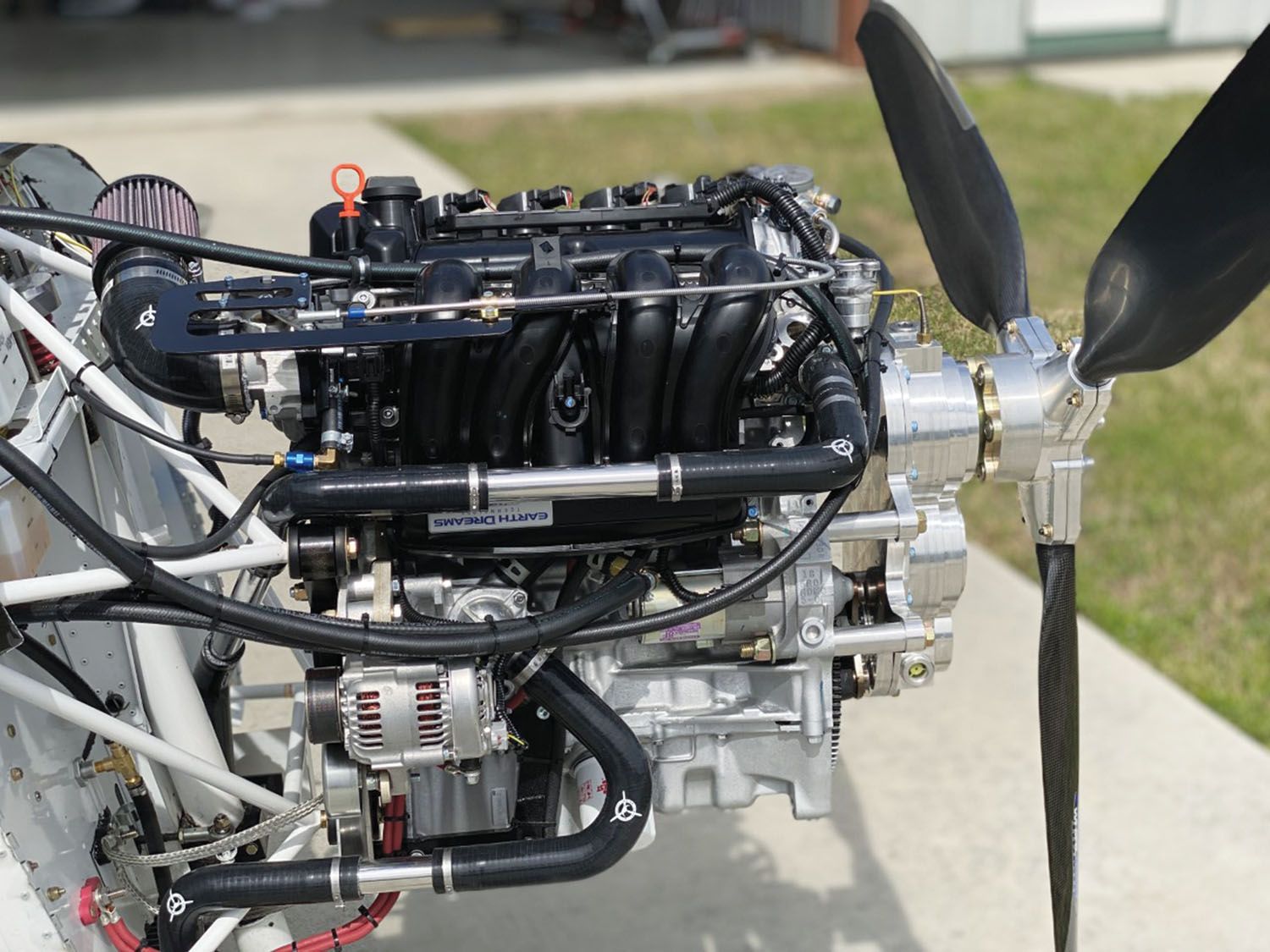
Viking’s entry-level offering is a 90-hp version of a three-cylinder, DOHC, 12-valve Mitsubishi engine. Fitted with Viking’s own gearbox (climb or cruise gear ratios can be ordered; it can also work in pusher applications), the combination weighs only 159 pounds and posts a particularly muscular low-end torque curve when augmented with the lower of the two gear sets. This engine is aimed particularly at the Zenith CH-701.
For its best-selling 130 hp engine, Viking starts with the direct-injected Honda Fit four-cylinder powerplant. Geared with a fairly steep 2.33:1 ratio and also with unexpectedly good low- and mid-range thrust, the combination weighs 220 pounds. Because the Fit engine has its exhaust manifold integral with the cylinder head, the engine is not a good candidate for turbo-charging. But the gasoline direct fuel injection (fuel is shot directly into the cylinders) gives in-cylinder cooling allowing a high 10.8:1 compression ratio for increased efficiency. By venting crankcase blowby to the atmosphere, Viking escapes the valve deposit issues found in some automotive gasoline direct injection (GDI) applications.
Viking’s top offering is the 195-hp version of the turbocharged Honda Civic engine. Naturally, this also gives a fat low-end torque curve (there’s nearly 440 pound-feet of torque at the prop at only 1250 rpm). This engine is also augmented by Viking’s gearbox and Honda’s GDI. Weight naturally rises to 260 pounds, but either 100LL or mogas can still be run. As with other modern, small-displacement, liquid-cooled engines, Viking specifies lead-scavenging additives with these engines if run on avgas.
Multiple firewall-forward kits and supporting parts are available from Viking to support these engines in Zenith, RANS, Van’s, Kitfox, GlaStar and other airframes. Viking notes it has engines in the field with more than 1300 total hours, and its product development program has a 100-hp version of the three-cylinder engine in the works for release at a later date. Another perk is rapid engine installation services if you can bring your project to the Edgewater, Florida facility.
| Engine Model | Drive Type | Horsepower | Weight | Price |
|---|---|---|---|---|
| Aeromomentum | ||||
| AM10 | geared | 85 hp @ 6000 rpm—upright | 139 lb w/ PSRU, starter, alternator, ECU | $8,495 |
| AM13u | geared | 100 hp @ 5800 rpm—upright | 170 lb w/ PSRU, starter, alternator, ECU | $8,995 |
| AM13h | geared | 100 hp @ 5800 rpm—low profile | 170 lb w/ PSRU, starter, alternator, ECU | $10,995 |
| AM13hp | geared | 126 hp @ 6500 rpm—low profile | 174 lb w/ PSRU, starter, alternator, ECU | $15,495 |
| AM15u | geared | 117 hp @ 5800 rpm—upright | 185 lb w/ PSRU, starter, alternator, ECU | $10,495 |
| AM15h | geared | 117 hp @ 5800 rpm—low profile | 185 lb w/ PSRU, starter, alternator, ECU | $12,495 |
| AM15hp | geared | 147 hp @ 6500 rpm—low profile | 189 lb w/ PSRU, starter, alternator, ECU | $16,495 |
| AM20T | geared | 260 hp @ 6000 rpm—low profile | 310 lb w/ PSRU, starter, alternator, ECU, turbo | $19,995 |
| Adept Airmotive | ||||
| 260N V-6 | geared | 260 hp @ 5500 rpm normally aspirated | 306 lb w/ radiator, alt, EFI, starter, dry sump system | $60,000 |
| 280N V-6 | geared | 280 hp @ 5500 rpm normally aspirated | 306 lb w/ radiator, alt, EFI, starter, dry sump system | $65,000 |
| 300N V-6 | geared | 300 hp @ 5500 rpm normally aspirated | 306 lb w/ radiator, alt, EFI, starter, dry sump system | $75,000 |
| 320T V-6 | geared | 320 hp @ 5500 rpm turbocharged | 340 lb w/ radiator, alt, EFI, starter, dry sump system | $85,000 |
| 360T V-6 | geared | 360 hp @ 5500 rpm turbocharged | 340 lb w/ radiator, alt, EFI, starter, dry sump system | $95,000 |
| AutoPSRU’s | ||||
| LS-3 Chevrolet | geared | 360 hp @ 4500 rpm (centrifugal clutch) 1.666:1 ratio | 580 lb installed, typical, complete | $44,800 FWF |
| 2.5L Subaru | geared | 150 hp @ 5000 rpm (centrifugal clutch) 1.859:1 ratio | 355 lb installed, typical, complete | $33,100 FWF |
| 3.0L Subaru | geared | 230 hp @ 5000 rpm (centrifugal clutch) 1.859:1 ratio | 375 lb installed, typical, complete | $33,400 FWF |
| Firewall Forward Aero Engines (CAM engines) | ||||
| CAM100 Honda | belt | 100 hp @ 5500 rpm | 226 lb w/ PSRU, injection, no starter or alternator | $16,790 |
| CAM125 Honda | belt | 130 hp @ 5500 rpm | 247 lb w/ PSRU, injection, no starter or alternator | $18,645 |
| Robinson V-8 Power | ||||
| LS-3 Chevrolet (LS-376/480) | geared | 450 hp @ 5000 rpm 1.98:1 ratio | 525 lb installed, typical, ready to run | $39,500 base |
| Viking Aircraft Engines | ||||
| V-90 Mitsubishi | geared | 90 hp @ 5800 rpm | 160 lb w/ exhaust, alternator | $9,995 |
| V-130 Honda Fit | geared | 130 hp @ 5400 rpm | 215 lb w/ exhaust, alternator | $10,995 |
| V-170 Honda Civic | geared | 170 hp @ 5400 rpm | 260 lb w/ exhaust, alternator | $16,995 |

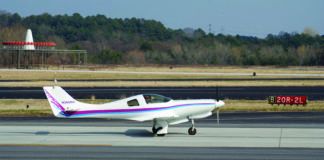
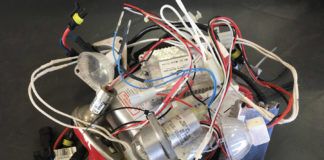
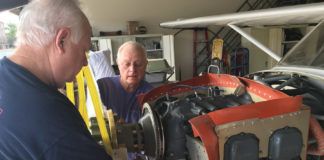
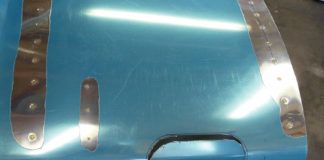
Great article!
Viking have also just announced zero-hour 150 HP engines for $15 500 USD. Alissa confirmed with me yesterday that this engine can also be equipped with their inflight adjustable propeller or CSU. Nice!!
Also, the Viking 170 is now superseded on their website with a 195 HP Turbo version (can also be CSU).
If you haven’t already done so, please consider including the Edge Performance EPeX200Ti and EPeX300Ti Yamaha Apex engine conversions – excellent power to weight from apparently reliable platform
> Yamaha Phazer, Genesis YG2 80FI (2007-present)
80 hp @ 11,000rpm. 499cc, 2-Cyl, 4-stroke
DOHC, 5 valves per cylinder, fuel-injection, liquid-cooled, elec start
“80 hp+ stock, 96+ hp with cool air intake and exhaust and porting, Turbo 140 hp.”
> Yamaha Phazer conversion by MAC (Mohawk Aero Craft)
59 kg (130 lbs) all-up installed weight = 1.356 hp/kg
> Yamaha Phazer conversion using Teal Jenkins gearbox
52.16 kg (115 lbs) approx with all accessories = 1.53 hp/kg
> Yamaha RX1 YG4 conversion by Skytrax (Teal Jenkins) with Skytrax gearbox, complete FWF
178.5 lbs (81kg) including exhaust, Oil Tank, Coolant Tank and Radiator = 1.72 hp/kg
> Apex (YG4i) EFI engine. Genesis 150FI. 2006 – 2018
150 hp @ 9,500rpm, 998cc, 4-cylinder, DOHC, EFI (39mm Mikuni x 4), liquid-cooled = 1.85 hp/kg